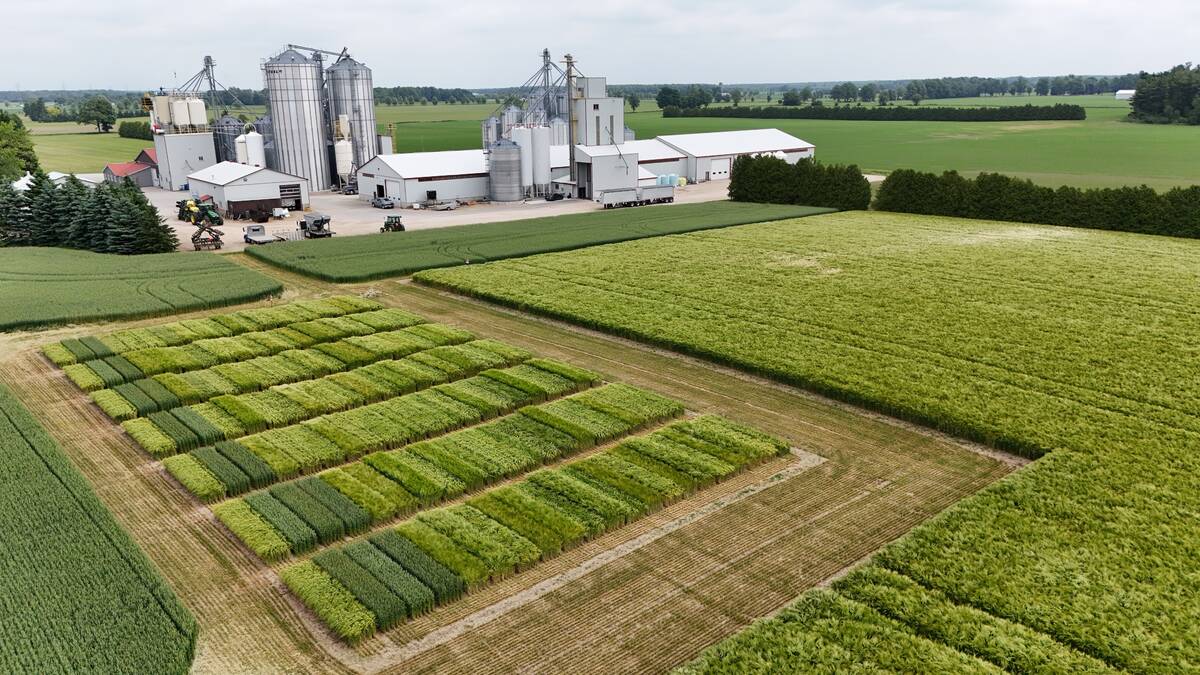Ontario corn growers interested in benchmarking and improving their crop can participate in a grassroots corn yield enhancement initiative.
Reminiscent of the Great Lakes Yield Enhancement Network (YEN) wheat competition, the corn enhancement group was started last year by Chris Roelands, agronomist and operator of Honeyland Ag Services in Ailsa Craig.
Sixty-five test sites scattered around and between Ailsa Craig, Ridgetown and Shelburne were analyzed through the 2022 growing season. Like the YEN tour, growers working with Roelands receive information about their crop via chart, with data points indicating where they fell in the distribution for a given metric – yield, soil organic matter, nutrient levels, etc.
Read Also

Winter cereals beyond wheat gaining traction
Winter cereals such other than wheat, such as barley, could provide better yield and rotation options for Ontario growers.
Why it matters: Confirming what correlates with higher corn yields, and what does not, supports best management practices.
“Information from the wheat program was very interesting, so we thought it would be cool to try it in the other crops,” Roelands says. “We decided to try and do a miniature version of YEN for corn. Maybe we can get some of the basic information to work with through soil and plant tissue test and analyze end yields.”
The results
The 2022 project revealed two notable points regarding nutrients. On the soil side, Roelands says higher potassium, nitrogen and phosphorus levels were consistently found across sites in the top 10 per cent.
These same sites also showed slightly fewer micronutrients.
The correlation between yield and organic matter, or lack thereof, was described as a “real headscratcher.”
“The top 10 per cent averaged basically the same as the rest of the group. That’s the same as they found in the wheat program, which is a bit bizarre. I know if we do a test on the single farm level we will see a difference,” says Roelands. “Maybe its something about just distributing it among a wider range of soil types.”
Between 30 and 40 cobs were collected from what were considered average parts of each site. Yield results confirmed existing research showing higher kernel weight was a significant factor in higher yields.
“In our sites we saw the top 10 per cent had a statistical difference and were higher. The only odd observation that was interesting was really low calcium levels in grain also seemed to represent higher yielding fields,” says Roelands, adding the yield average in the top performing sites was approximately 246 bushels per acre.
Regarding plant tissue sampling, Roelands says he was interested to see if they would find similar results as those found in United States; specifically, that plant tissues in high-yielding crops commonly contained high levels of nutrients.
“Can we truth that out? Yes, we can. The total nutrient content of the leaf…if you add up those numbers, they will be higher in higher performing sites. That was kind of a confirmation of what we heard from people in the U.S.A.”
Roelands plans to run another corn yield research initiative through 2023 and will add soybeans and edible beans to the project portfolio.















